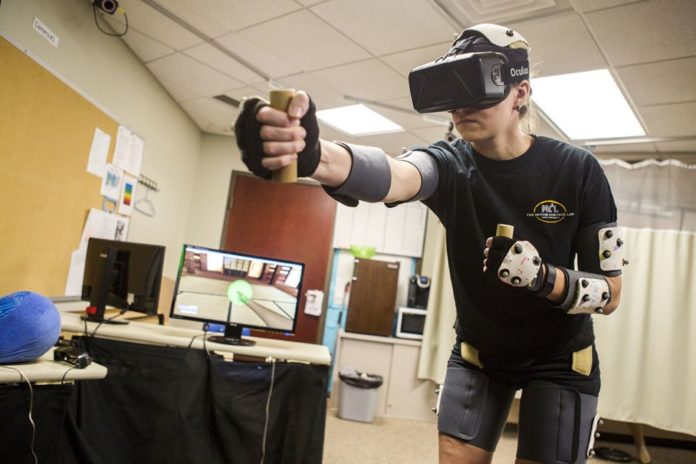The term “virtual reality” evokes images of gamers huddled around new devices, Millennials sipping coffee as they chat about the latest gadgets, and technophiles miming about in space age glasses at popular events. While it might seem consumer-centric, virtual reality (VR) and its practical applications are rapidly being discovered in industries outside the consumer realm, including manufacturing, retail and healthcare. In fact, through the implementation of VR technologies, the landscape of healthcare has begun to transform dramatically, as physical therapist seek new ways to care for patients. Baby boomers are especially reaping the benefits, as VR has begun to play a unique role in physical therapy and rehabilitation (not to mention in such procedures as knee and hip replacement surgeries).
The benefits of VR in healthcare – especially as it applies to baby boomers – are undeniable, with increase accessibility, time and cost savings, the reality of its advancement in physical therapy is far more than just virtual.
A new era for rehabilitation and recovery
For years, traditional physical therapy programs have relied on in-person treatment and a combination of manual therapy and biomechanics expertise in order to achieve patient recovery success. However, the hands-on approach only occurs two to three times a week, leaving the patient responsible for the majority of the work to complete at home. With virtual physical therapy, there is more patient empowerment involved because they need to do more outside of the clinic but there are also incredible gains from in-home therapy such as faster recovery time.
Interestingly, more and more of the baby boomer population are becoming internet savvy illustrating the elderly’s willingness to adopt and learn new technology at a growing rate. With this in mind, and noting on some of the issues associated with traditional therapy methods, VR could have a very bright future among baby boomers.
Welcome to your avatar
Virtual physical therapy is transforming rehabilitation by providing baby boomers – and patients overall – with a much more personalized, convenient and engaging medical experience. Instead of being left to complete recovery exercises from a piece of paper, patients are guided by a virtual avatar deployed as an extension of a physical therapist to complete each exercise from home and around their schedule.

Virtual physical therapy is providing physical therapists with valuable information and insight to a patients’ recovery process. Through the built-in avatar and remote monitoring, patients’ interactions and biometric data is collected from each virtual rehabilitation exercise to analyze the body’s movement and provide advanced measurements on patient progress. Physical therapists not only have direct insight to the patient’s performance, but can determine frequency of use, adherence and overall patient participation. They can then provide instant, valuable feedback and instruction to the patient, which contributes to better performance results and faster recovery times.
Ultimately, avatars and a virtual reality setting empowers patients to perform their prescribed physical therapy exercises from home while simultaneously improving access, real-time communication and feedback with their physical therapist. This is especially beneficial in areas such as the northeast where severe winter weather can often interrupt a patient’s ability to see a physical therapist in-person due to regional affects.

Communication is a two-way street
There is a common misconception that VR technologies in healthcare will replace physical therapists – and that is simply not the case. In fact, programs built around virtual reality actually have the ability to increase communication between the physical therapist and patient: Not only do these programs offer a much more engaging exercise platform; they leverage other forms of technology, allowing the physical therapist to message with the patient directly or conduct live real-time video conferencing visits. These communication portals create convenience and ease between physical therapist and patient, no matter the setting.
Additionally, physical therapists can quickly determine if a patient should be seen in person sooner rather than later based on performance. Again, this is not meant to replace the hands-on skill provided by a physical therapist; rather, it is an extension of their profession by engaging with patients in a whole new way.

Exciting road to recovery
While still in its early stages, VR is proving to be a powerful approach for both physical therapist and patient when it comes to physical therapy, with high efficiency rates and improved adherence to recovery routines. Baby boomers – as well as patients overall – can benefit from that special level of personalization, convenience and engagement that VR provides, making the road to recovery both effective and – dare we say it – intriguing. No more is this unique technology in just the conversations of gamers, Millennials and technophiles – the healthcare industry is fully abuzz, and on the horizon is a better, stronger tomorrow.


